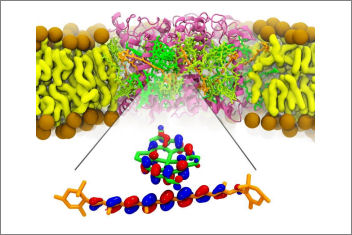
How do plants protect themselves from excess light? In our new article, published on Nature Communications, we explore the role of charge-transfer states in the quenching of chlorophyll excitation by carotenoid molecules.
The photosynthetic machinery of plants contains chlorophyll and carotenoid pigments organized in antenna complexes, which harvest light and transfer the energy to reaction centers. In high-light conditions, antenna complexes are able to “switch off” their light harvesting function and enter a dissipative state, where the excitation energy is safely quenched and trasformed into heat. We propose that an electron transfer from a carotenoid molecule (Lutein) to a chlorophyll can efficiently quench chlorophyll excitation and dissipate energy. This mechanism can be controlled by the complex, and switched on and off depending on the light conditions.







